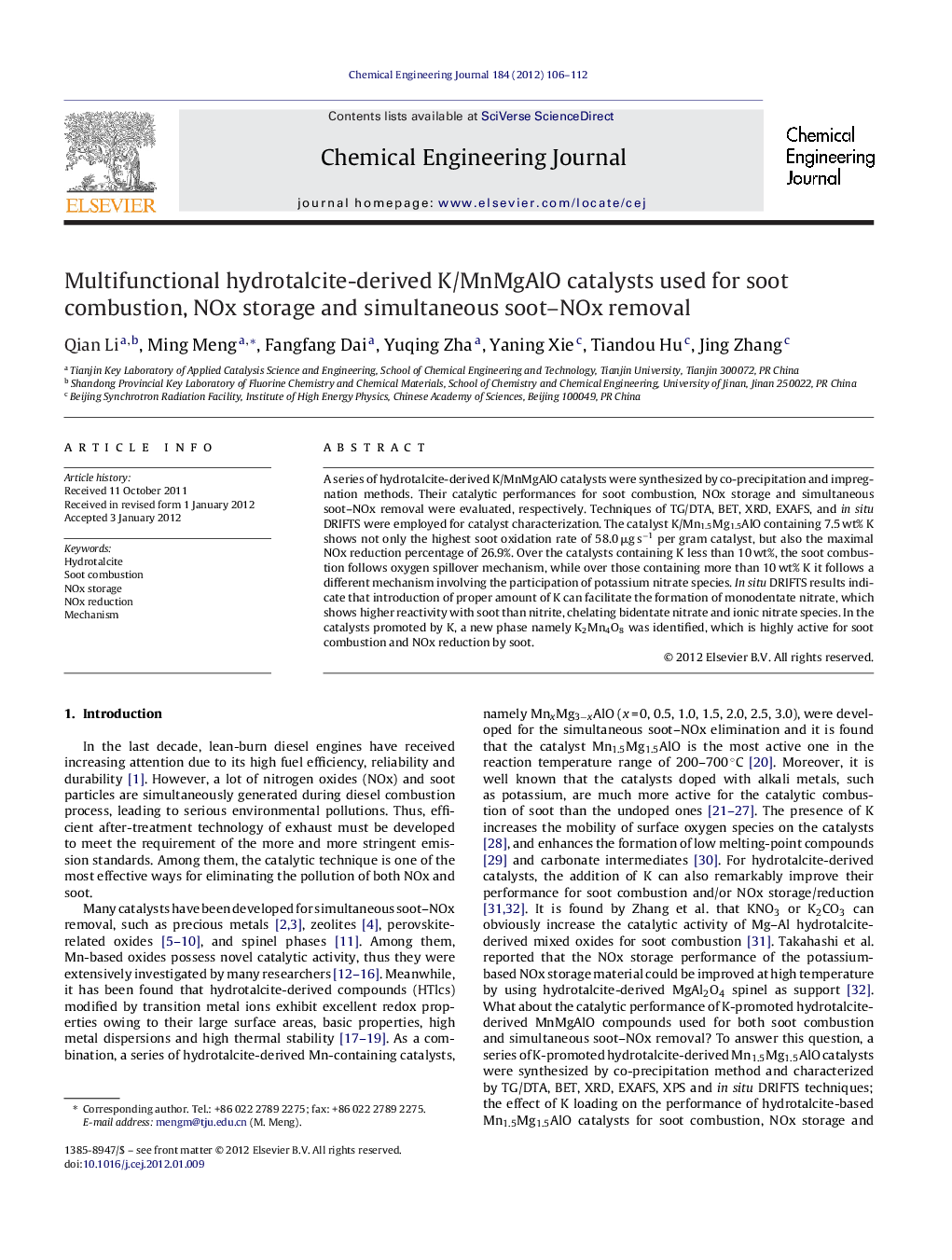| کد مقاله | کد نشریه | سال انتشار | مقاله انگلیسی | نسخه تمام متن |
|---|---|---|---|---|
| 150095 | 456444 | 2012 | 7 صفحه PDF | دانلود رایگان |

A series of hydrotalcite-derived K/MnMgAlO catalysts were synthesized by co-precipitation and impregnation methods. Their catalytic performances for soot combustion, NOx storage and simultaneous soot–NOx removal were evaluated, respectively. Techniques of TG/DTA, BET, XRD, EXAFS, and in situ DRIFTS were employed for catalyst characterization. The catalyst K/Mn1.5Mg1.5AlO containing 7.5 wt% K shows not only the highest soot oxidation rate of 58.0 μg s−1 per gram catalyst, but also the maximal NOx reduction percentage of 26.9%. Over the catalysts containing K less than 10 wt%, the soot combustion follows oxygen spillover mechanism, while over those containing more than 10 wt% K it follows a different mechanism involving the participation of potassium nitrate species. In situ DRIFTS results indicate that introduction of proper amount of K can facilitate the formation of monodentate nitrate, which shows higher reactivity with soot than nitrite, chelating bidentate nitrate and ionic nitrate species. In the catalysts promoted by K, a new phase namely K2Mn4O8 was identified, which is highly active for soot combustion and NOx reduction by soot.
Figure optionsDownload as PowerPoint slideHighlights
► Hydrotalcite-derived K/MnMgAlO catalysts are highly active for soot combustion.
► K/MnMgAlO is also very effective for NOx storage and simultaneous soot–NOx removal.
► K/MnMgAlO with 7.5 wt% K shows the highest soot oxidation and NOx reduction activity.
► K2Mn4O8 is identified as the most active phase for NOx reduction by soot.
► Monodentate nitrates are more reactive with soot than nitrites and other nitrates.
Journal: Chemical Engineering Journal - Volume 184, 1 March 2012, Pages 106–112